A reliable compass is an essential tool for finding direction, however, there are many other methods that can be used to find or help confirm direction. These techniques are based on observing our natural surroundings and can provide an interesting new set of navigation skills. Numerous methods have been handed down over the centuries, this is a selection of some of the more simple methods:
Using the Stars
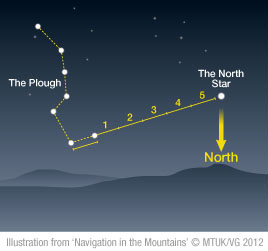
Northern Hemisphere
Look at the Big Dipper (Plough), draw an imaginary line between the two stars that form the front of the Plough and continue it about 5 times the distance of those stars to find the North Star. This star lies over North on the horizon.
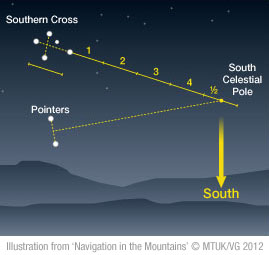
Southern Hemisphere
Use the Southern Cross to find approximate South. Draw an imaginary line from the cross piece, about 4.5 times its length. South should be on the horizon below this point. Two bright stars below the cross can be used to help find the right point.
Using the Moon
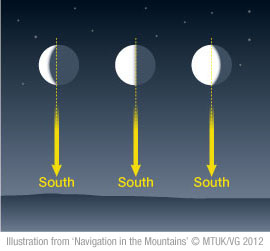
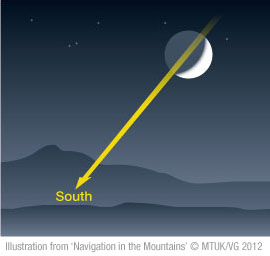
As the moon travels across the sky, it tilts, enabling the horns to always indicate South. The horns may be joined regardless of which phase the moon is in. This method becomes increasingly inaccurate the closer the moon gets to the horizon.
Using the Sun
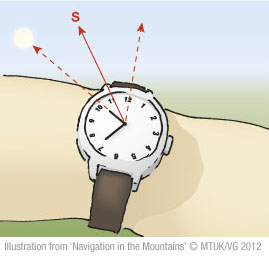
Northern Hemisphere
Point the hour hand at the sun. Imagine a line halfway between the hour hand and 12 0’clock. South will be at the head of that line.
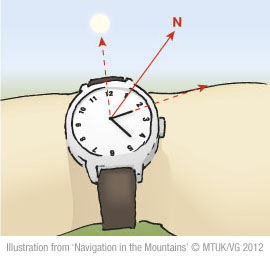
Southern Hemisphere
Point the 12 o’clock mark on the watch at the sun. North lies halfway between 12 o’clock and the hour hand.
Sun-stick Method
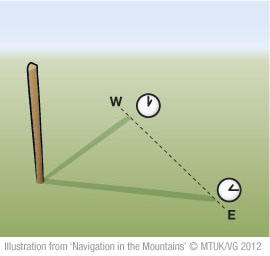
Stand a stick about 1m length on level ground. Mark the end of the shadow. After at least 15 minutes, mark the end of the shadow again. A line drawn through these markers will give you an East-West Line. In the Northern Hemisphere, the first mark will be West.
Simple but effective!
Credit: “Navigation in the Mountains – The definitive guide for Hill Walkers, Mountaineers & Leaders by Carlo Forte (ISBN: 978-0-9541511-5-7)

